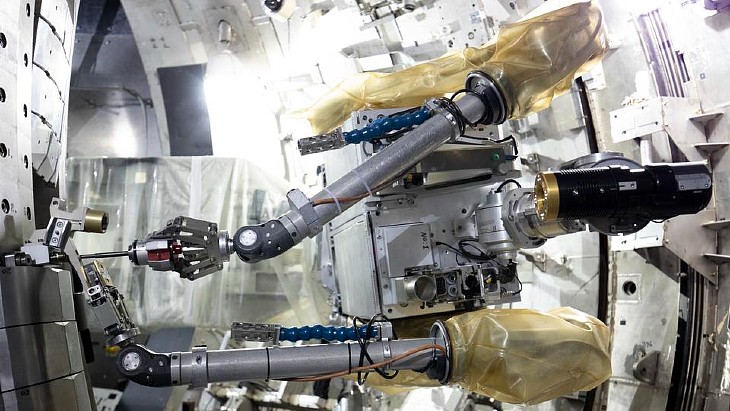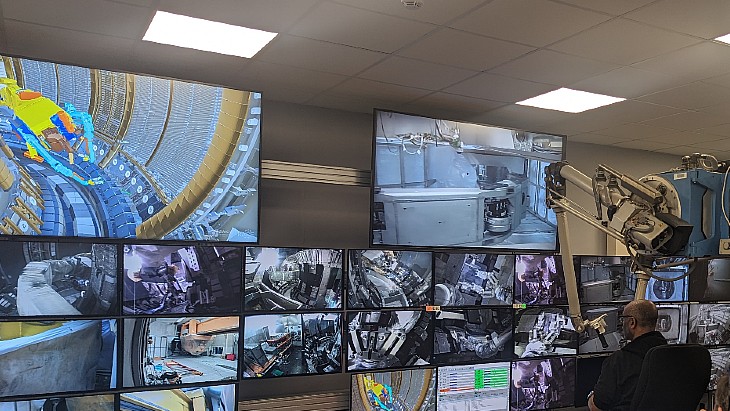The Joint European Torus (JET) concluded its plasma operations at the end of December 2023. The tokamak fusion system has moved to the next phase of its life cycle for repurposing and decommissioning, representing an opportunity to develop new technologies and skills.
The Remote Handling Control Room upgrades include a complete overhaul of MASCOT, a highly dextrous remote manipulator with haptic feedback, which allows the operator to feel every action from carrying a new component to tightening a bolt.

MASCOT being put through its paces during training (Image: UKAEA)
The critical testing of the inside of the tokamak is now under way and will continue throughout Spring and Summer of 2024, the UK Atomic Energy Authority (UKAEA) said. This process involves retrieving 60 key samples for further scientific analysis.
The remote handling operators will be responsible for eventually removing more than 4000 individual tiles and components from JET's inner vessel, including some that weigh several hundreds of kilogrammes.
"The Remote Handling System is absolutely fundamental to the repurposing and decommissioning of JET," said Steve Gilligan, the Programme Sponsor and Head of Decommissioning and Handling. "Due to safety precautions, personnel have not been able to enter the tokamak for over 30 years. Further, JET's plasma operations over the last few years have made it a particularly challenging environment to work with.
"We have refurbished the system so that it's fit for the future. This has taken huge effort, more than 400,000 hours have been invested in its upgrade, which includes research and development, installation, testing, commissioning and training."
JET was a tokamak fusion system with a doughnut-shaped vacuum chamber where, under the influence of extreme heat and pressure, gaseous hydrogen fuel becomes a plasma. The charged particles of the plasma can be shaped and controlled by massive magnetic coils placed around the vessel to confine the hot plasma away from the vessel walls. It was the only tokamak fusion machine in operation capable of handling tritium fuel, and was a key device in preparations for the multinational ITER fusion research project which is currently under construction in southern France.
JET was a European project built and used collaboratively by European researchers. It is now owned, and in recent years has been operated by, the UKAEA, and used by scientists from 28 European countries to conduct research into the potential for carbon-free fusion energy in the future through work coordinated by the EUROfusion consortium. The tokamak's first deuterium-tritium experiments took place in 1997.
JET's final experiments using deuterium and tritium fuel were conducted over seven weeks from August to October last year, ahead of its retirement following its final pulse in December. During those experiments, JET produced the largest amount of energy achieved in a fusion experiment, breaking its own record set in 2021.
Following its retirement JET moves on to repurposing and decommissioning, a process expected to last until about 2040.






_63865.jpg)
_18570.jpg)
_16159.jpg)





